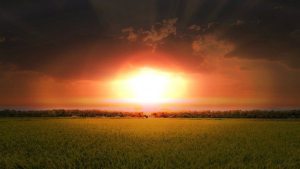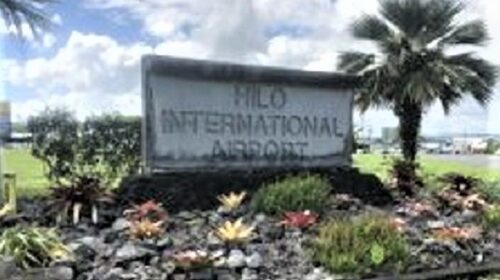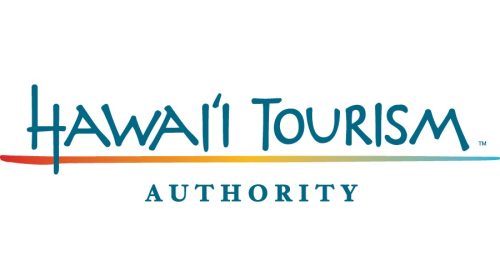Escaping death beyond horror in Hawaii: People running for shelter refused at Walmart, but welcomed at Home Depot
Yesterday’s nuclear threat in Hawaii was an eye-opener for everyone. Walmart closed their doors on people in panic trying to find a building to shelter. Walmart kicked everyone out of their stores to their parking lot, so did Target and 24-hour fitness in Hawaii. A store living up to the spirit of Aloha was Home Depot. They invited people to seek shelter in their stores.
Yesterday a father put his daughter in a manhole to protect her, Pearl Harbor went on Alert with the false alarm, other parents hid their children in bathtubs to protect them, people out walking fell and hurt themselves trying to get to shelter, people got out of their cars and hiding underneath their vehicle, and the stories go on and on.
Waikiki Hotels told their guests to stay indoors away from the windows and close window shades, other hotels in Maui pushed hotel guests into their basements.
Walmart closed their doors and kicked everyone out of their stores to the parking lot, so did Target and 24-hour fitness, while Home Depot urged people to seek shelter in their stores.
The situation in Hawaii today was chaos, confusion and panic. There are no shelters to go to, there are no clear instructions what to do with your last 15 minutes before the bomb would hit.
If a ballistic missile was on its way, you didn’t have a chance. Your only chance would be for the US Air Force to intercept and destroy the missile before it could hit its target.
eTN reader Carolyn Martinez Golojuch says:
“I lived through the 50-60’s Bomb Shelters. My family didn’t have the funds so we took our chances. After my husband’s 23 years in the USAF, I knew nothing would be left of Hawaii. There are the ammunition dumps all over Oahu. If even half of them are somewhat active, combined with the Nuclear power, I’d be gone in a blink of an eye. By some wild chance that I’d be left, a death by radiation poisoning would be a death beyond horror. Remember what was left in the Marshall Island’s after the testing on people of color?! Google it. Ever heard of Jelly babies?”
According to a story published in the Science Magazine, a Nuclear bomb map reveals how likely you are to survive a nuclear attack.
Around a third of the energy of an atomic bomb is released through thermal radiation. This travels at around the speed of light, so the first thing you’ll see is a blinding flash of light and heat. For a one-megaton bomb, you’ll likely be temporarily blinded if you were standing 13 miles away on a clear day, or 53 miles away on a clear night.
Still, temporary blindness aside, you would escape the more serious health complaints: if you were standing seven miles away, you might need to be treated for mild first-degree burns. Stand within five miles of the blast zone, and you’re looking at more serious third-degree burns.
There’s a good chance that would be fatal, but not as good a chance as if you were closer to the blast zone itself. The center of the Hiroshima bomb was estimated to be around 300,000˚C. For perspective, cremations are carried out in furnaces that reach 1,200˚C, so there’s literally no chance of surviving that.
Your chances improve the further out you get, basically, but even if you get serious burns, you may be killed another way before you can be treated. Within a four-mile radius of a one-megaton bomb, blast waves can produce 180 tonnes of force and winds of around 158 miles per hour. That speed reaches 470mph in a half-mile radius. As a human, you might survive that pressure – but you likely wouldn’t survive any nearby buildings collapsing on you.
That’s before we even get on to the radiation poisoning. Radiation of 600 REM has a 90% chance of death. That drops by half when you hit 450 REM, but you’re not out of the woods then, with increased chances of cancer and potential genetic mutations.
But let’s say you’re not anywhere near the blast. You’re safe then, right? Well, not quite. Overlooking the fact that it wouldn’t be a nuclear war without retaliation, radioactive fallout can travel for hundreds of miles. Yes, its effects diminish after a couple of weeks, but that’s a couple of weeks when you’re going to want to stay in your fallout shelter. The bad news for Hawaii – there are no such shelters.
Again, that’s just a single-megaton bomb, and nukes are a little like Pringles: not only are they potentially deadly – you can’t have just one. A 2007 study examined what would happen if India and Pakistan engaged in a small-scale nuclear war of their own. Small-scale because, comparatively, both nations have fairly small arsenals of around 250(remember, Russia and the USA have nearly 14,000 between them). The conclusion of this study? With “just” 100 Hiroshima-sized bombs, 20 million would immediately die, five million tonnes of smoke would hit the stratosphere, and we’d enter nuclear winter. Global temperatures drop and agriculture would struggle causing famine and yet more deaths. A 2012 study projected that a 100-bomb nuclear war would cause two billion people to starve.
When it comes to nuclear wars, it’s not the case that the side with the biggest arsenal wins – more that everybody loses.
Carolyn continued: “From the beginning, this new Alert System was a mistake and a huge waste of money.”
Hawaii Governor Ige promised today such a false alarm would never happen again. Let’s hope a real alarm would never happen, because if it does – it doesn’t matter anymore, not for Wallmart, not for Target, not for 24h Fitness and unfortunately also not for Home Depot.




